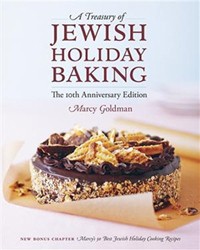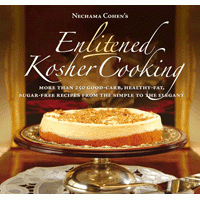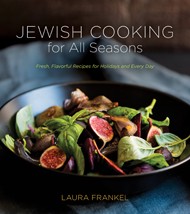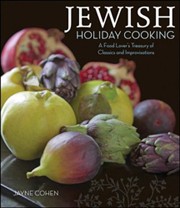Carol Ungar uses her talents as a writer and cook to bring readers a unique volume. Noting that the home, and in particular the dining table, is the true center of Jewish life, she uses the holidays on the Jewish calendar to present traditional foods along with their spiritual significance. The Hebrew word for Jew, Yehudi, has the same root as the word for gratitude, and Jewish spirituality is based on giving thanks. The holidays involve special foods to remind one of the importance of gratitude: matzo recalls slavery in Egypt, latkes invoke the oil that lasted eight days, and hamantaschen bring forth Haman’s evil deeds.
The author goes beyond these basic recollections with chapters for each holiday. Shabbat is full of foods with the Kabbalistic numerology of seven: challah, homemade sweet wine, and chicken soup. She provides menus for each of the meals served during the Sabbath, along with commentary about the origins of the dishes and their meaning. A Torah scroll challah for Simchat Torah, etrog confit for Tu Bishvat, and rice and lentil pilaf to break the fast of Tisha b’Av are among the special dishes that will add both meaning and delight to holiday observance. The recipes come from Ashkenazic, Sephardic, and Mizrahi Jewish traditions. Most are quick and easy to prepare. They are not labeled dairy, meat, or pareve, but the ingredient lists tell cooks where they belong. This is a lovely book for anyone interested in Jewish culinary traditions.





